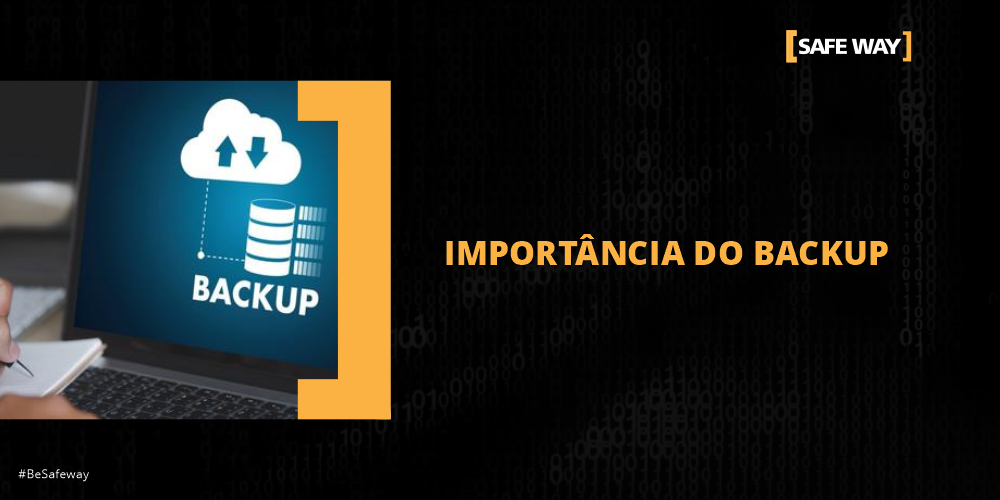* By Raíssa Ataide
Backup and its Importance
Overview
The definition of the word backup, summarizes in a copy of data security/ information from a storage device or system to another environment / location, which is regularly copied to ensure that this data can be restored in the event of a loss or an accident with the original data. Be it a document or data on the server, perform the backup information ensures that the productive routine remains alive.
Currently, for many organizations, data is considered the most valuable asset and losing this information, whether due to systemic malfunction or improper actions, can lead to a great annihilation. For this reason, it is of utmost importance to ensure that the execution of the backup carried out correctly, the information is saved, safe and available when necessary.
The process
It is extremely necessary to have a documented and well-established process for the business environment, but some factors must be well defined and taken into account.
The first step is to identify the main activities of the company and the data that needs to be protected, to raise the volume of the data produced daily to obtain a complete view. The company also needs to delimit the frequency of carrying out this backup, the type of infrastructure to be used (Data Center, cloud, etc.), describe the detailed procedures for a possible recovery and describe the possible recovery test scenarios.
In order to have an effective management, it is necessary to define a person responsible for coordinating this process, monitoring and ensuring that the execution is in accordance with the description. The manager should review the process by means of significant changes or improvements identified and monitor the frequency of tests, to validate and ensure that the routines of backup are carried out as established.
Types of backup of data
Each company needs to understand its business, which is applicable to its environment and adapt to its reality.
There are several ways to carry out the backup. I list below three basic and safe types of carrying out the process:
- Backup complete (full)
At each routine, all data is copied, the old data from the backup the previous one are replaced by the new ones each time it is done. It is basically making a complete copy of all the files.
Generally, data is available in a single unit and facilitates identification, this type of backup provides the best protection against data loss, as it makes it possible to have an identical copy of the environment. But due to the volumetry, if this is very large, the process takes much longer, for this reason, it usually occurs at a shorter periodicity.
- Backup incremental
This process is faster, but requires even greater control. Only data that has been modified since the last run is copied. O backup This incremental approach emerged in order to remedy some of the problems identified in the backup full, for example, copying files that have not changed and requiring more time at the time of copying.
Basically in the incremental, the backup complete data is made and to identify what has been changed, the backups incremental. The system will validate the modified files and make a copy of the most current, for this reason it is very important to keep a catalog of backups performed.
- Backup differential
This is somewhat similar to the incremental, but the difference is that, instead of copying what has been modified since the last backup partial, everything that has been modified since the last backup complete.
To get the recovery, just recover the last backup full and the last differential, thus minimizing the risk of data loss.
With each new routine, the copied quantity increases, increasing the copy time.
Consequences
As mentioned in this article, the value and responsibility of executing the backup. Hours of work and information will be lost if backup copies are not performed correctly. For this reason, it is so important that data is stored with the required priority and care.
A company that suffers from data loss is directly affected by problems of financial loss, reputation, not to mention rework, increased spending on adjustments, wear and tear and loss of integrity. What happens most is that, in the face of a crisis, companies begin to implement security controls in a timely manner or establish unstructured processes, just to remedy or remedy the deviation, not remedying the root cause of the problem and allowing opening to new losses.
The importance of the process and execution of backup, goes beyond being in compliance with normative or regulatory requirements, today the company that has this control, is already framed at a high level, recognizes the applicability, knows what is vital to its business, recognizes the importance of the routines of backup for a mature and healthy environment that allows the competitive level and compliance to gain prominence.
- Raíssa Ataide is GRC, Privacy and Information Security Manager at [SAFEWAY]
Regarding the [SAFEWAY]
SAFEWAY is an Information Security company, recognized by its customers for offering high added value solutions, through Information Security projects that fully meet the needs of the business. In these years of experience, we have accumulated, with great pride, several successful projects that have earned us credibility and prominence in our clients, who constitute, in large part, the 100 largest companies in Brazil. Today through more than 22 strategic partnerships with global manufacturers and our SOC, SAFEWAY is considered a one stop shopping with the best technology, processes and people solutions.




